#Micheaux Mission
Text
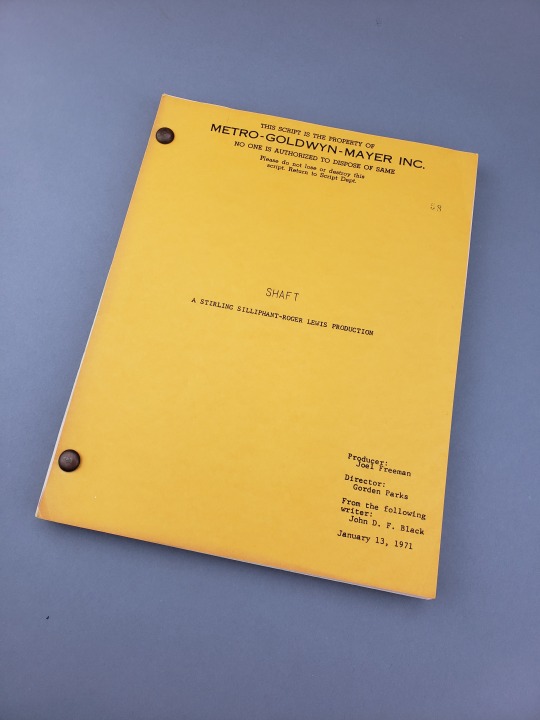
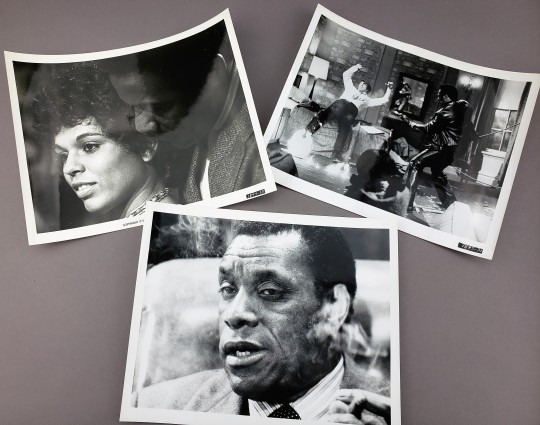
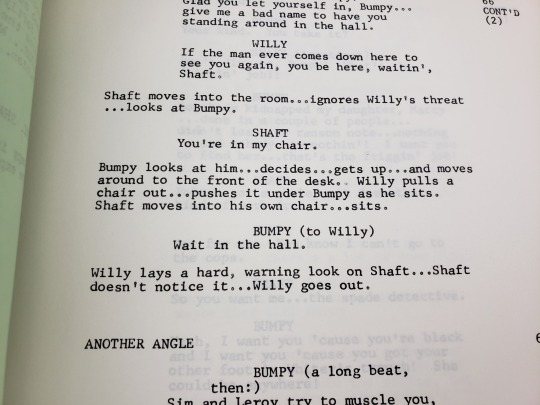
Shaft and the Era of Blaxploitation
Last year, Special Collections and Archives at the University of Iowa Libraries acquired items to form a new collection: the Black Film and Television Collection. In honor of Black History Month, we’re shining a spotlight on a different item from this collection each week.
In last week’s post, we discussed the lobby card for Oscar Micheaux’s 1938 film Swing, starring Cora Green. Our next spotlight is on original materials from the 1971 film Shaft, which includes the script used in the production in the movie, which was a defining entry in the Blaxploitation genre.
What is “Blaxploitation?”
We’ll start with the obvious: the word itself blends “Black” and “exploitation” and was coined by Beverly Hills-Hollywood NAACP president Junius Griffin in 1972 and wasn’t in the context of praise.
Blaxploitation movies are made by black filmmakers with black actors for black audiences. They portray strong black characters who were the heroes and leads. During the mid- to early 1970s, more than 200 movies of the genre were made, in subgenres such as horror, westerns, comedy, drama, and action.
Rather than trying to dispel stereotypes, movies like Shaft reinforce them. And while the movies were popular with audiences, that approach did create some critics, like Junius Griffin and other NAACP members.
Exploiting a lurid loophole
The Hays Code ruled Hollywood from 1934 to 1968, enforcing a strict set of moral standards for films. But filmmakers tend to be creative people, and “exploitation films” were the loophole they chose. If they depicted these offensive (and entertaining) subjects under the guise of a cautionary tale, they could get away with including them.
Over the years, court cases and boundary-breakers chipped away at the Hays Code. In 1968—the same year most history textbooks mark as the end of the Civil Rights Movement because it coincides with the assassination of Dr. Martin Luther King, Jr.—the Motion Picture Association of America (MPAA) scrapped the Code in favor of the film rating system. It was into these unique circumstances that a new genre—Blaxploitation—was born.
John Shaft’s world
Shaft is an adaptation of Ernest Tidyman’s 1970 detective novel, directed by Gordon Parks. Opening on an urban panorama overlaid with a funk soundtrack, the movie stars Richard Roundtree as John Shaft, a stylish and suave private detective in New York who is approached by the boss of a Harlem organized crime family (Moses Gunn) in search of his kidnapped daughter (Sherri Brewer). In the course of his mission, Shaft dispatches mafiosos, teams up with activists in the Black Power Movement, and delivers enough one-liners to cement his legacy as one of the iconic characters of 20th century film.
Even a brief glimpse at the original movie script’s pages (like the one shown above) showcase the swagger and bombast of the protagonist, who would go on to anchor multiple sequels. The movie’s iconic theme song, written and recorded by Isaac Hayes, has been sampled and reused dozens of times since the movie’s release, and the film itself has been preserved by the Library of Congress. It provides one of the early blueprints for the Blaxploitation genre, which continued to flourish throughout the 1970s.
It’s well worth noting that while Shaft’s director, stars, and core audience were Black, its writers were both white men. This information certainly complicates how many viewers receive the film’s representation of Black characters—and those complications became the focus of blaxploitation’s most vocal detractors.
Blaxploitation may have had its heyday in the 1970s, but it’s never truly ended. The genre was carried into the 21st century by the generation of filmmakers it inspired, including John Singleton, Spike Lee, and the Hughes Brothers.
Our next entry will be a look at Cheryl Dunye’s 1997 film The Watermelon Woman, and the growing influence of Black women in the film industry.
---Natalee Dawson, Communication Coordinator at UIowa Libraries with assistance from Anne Bassett, Liz Riordan, and Jerome Kirby
25 notes
·
View notes
Text
Astronaut Suni Williams Prepares for Crew Flight Test
NASA/Frank Micheaux
NASA’s Boeing Crew Flight Test astronaut Suni Williams gives a thumbs up during a mission dress rehearsal on Friday, April 26, 2024, at the agency’s Kennedy Space Center in Florida. Williams was selected as an astronaut by NASA in 1998 and has been aboard the International Space Station twice. She is set to return to the space station for a third time, traveling aboard…

View On WordPress
0 notes
Text
Before There Was Hollywood
Did you know that the U.S. movie industry began along the New Jersey side of the Hudson River in the early 1900s? This town is where The Exile, the first all-Black cast "talkie" by Pioneer African-American filmmaker Oscar Micheaux at Metropolitan Studios, was shot. And where the "mother of cinema, the first female film director and movie executive Alice Guy-Blaché, opened her studio?
Nelson Page, President of the Barrymore Film Center, shares the journey of building the Barrymore Film Center located in Fort Lee, New Jersey and its mission to support the voices of independent cinema. Opening in October 2022, thanks to Fort Lee's Mayor Mark Sokolich and the support of the Fort Lee Film Commission and Borough Council members, the Barrymore promises to be the leading venue for filmmakers in the NJ-NYC area. It includes a 260-seat cinema and film museum.
The Barrymore Film Center was designed by renowned theater architect, the late Hugh Hardy, whose work includes the renovations of Radio City Musical Hall and the Rainbow Room in Manhattan and so many other theaters.
Check out this episode!
0 notes
Text
round up // AUGUST 19

It’s been a minute, hasn’t it?
Let me assure you—it’s not you, it’s me. You know those times in life when watching and writing about every Best Picture winner in a regular cadence feels impossible? No? That’s just me? Every time I think I’m about to get going on this Best Picture Project again, it seems like life finds another reason for me to spend packing up boxes or suitcases again (or sometimes even just packing more into my tired, little mind). As the trailer for the World War I film 1917 says, “TIME IS THE ENEMY.” The all-caps treatment feels appropriate here, too.
But because my tired, little mind does ache to write about movies, I’ve been inspired to try a new segment—inspired by my very own sister. She’s a writer with a drive and commitment to her travel blog I envy sometimes. (But don’t worry, it’s in more an I’m-proud-of-her kind of way than an Othello kind of way.) Every month over at Round Trip, she rounds up the highlights and new things she’s tried each month. They’re some of my favorite posts to read, so I thought I’d create my own version with a Crowd vs. Critic twist. (But don’t worry—it’s more an imitation-is-the-sincerest-form-of-flattery thing than a Talented Mr. Ripley kind of thing.) Each month I’ll be sharing my favorite crowd-pleasers and my top critic picks. The twist on that? I’m recommending more than just films. These are the new-to-me cultural artifacts I’ve loved in a rough order of when I experienced them, including (but not limited to) a TV show, podcast, lengthy feature article, art exhibit, and music video. Oh, and of course, a few movies I’ve seen or am excited for, too.
August Crowd-Pleasers

Fast & Furious Presents: Hobbs & Shaw (2019)
I’m not really a Fast & Furious gal, and this movie is grade-A bonkers. But Dwayne “The Rock” Johnson and Jason Statham make stupid one-liners land like nobody else. Seeing Princess Margaret taking control of her life was unexpectedly satisfying, and kudos to this team for knowing this is the kind of movie that should be as indulgent and over-the-top as it wants. Crowd: 10/10 // Critic: 6/10
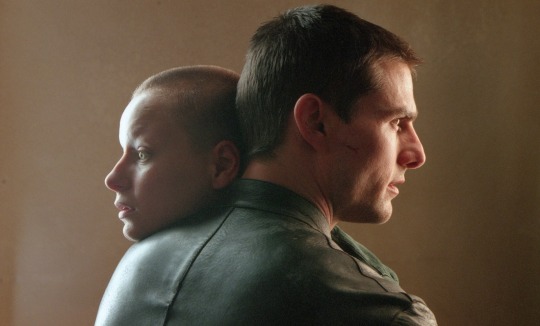
Minority Report (2002)
Not everything about this Steven Spielberg/Tom Cruise flick gels, and the influence of contemporary blockbusters like The Matrix and Star Wars is excessive. But its take on the surveillance state was prescient, and it’s still a tense thriller. Crowd: 8.5/10 // Critic: 8/10

Veronica Mars (TV series: 2004-2007, 2019; Movie: 2014)
I’ve been looking for a way to watch this teen detective drama for awhile, and I know why people have been recommended this to me for years. With the new Hulu reboot, the original series is finally available there as well, and I couldn’t stop watching. I’ve given up on other, critically loved shows in an episode or less because I struggle watching violence against women—sorry, The Americans, The Handmaid’s Tale, and Jessica Jones. Veronica Mars somehow handles those storylines with all the seriousness and sensitivity they deserve but without the graphic depictions that make me feel sick. Smart, funny, and addictive, it’s the kind of binge I love, and now I’m just trying to emotionally recover from that new season.
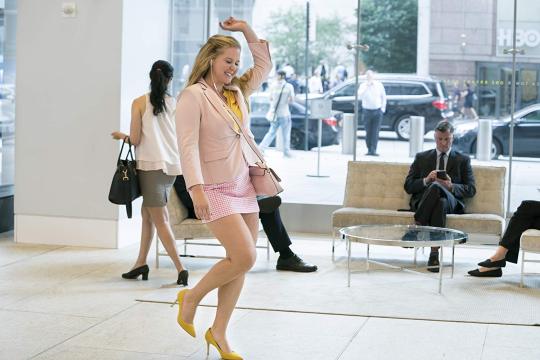
I Feel Pretty (2018)
I’m also not much of an Amy Schumer gal, but this really clicked. If all message movies were this funny and clever, maybe they would have a better chance at making the world a better place. Crowd: 9/10 // Critic: 6.5/10

The Micheaux Mission
Len and Vince’s thoughtful, funny podcast covering every Black Film ever made took a “Binge Lounge” detour into a retrospective on Black Family Sitcoms this month from the most obvious (The Cosby Show) to the obscure (Julia). Now that I’ve finished Veronica Mars, I might need to revisit the gem that is Everybody Hates Chris.

The King’s Man trailer (2020)
Unclear why the franchise is deviating from the dynamic duo of Taron Egerton and Colin Firth, but color me intrigued.

Rolling Stone’s “Millennial 100”
This beast of a list was published last fall, but I just happened upon it and read all 100 entries. Inevitably, Every Millennial will find something missing on this list (Where is Gilmore Girls? Why do we need to list Taylor Swift’s boyfriends instead of her music?), but it’s a solid summation of the influences on our childhood and adolescence.
August Critic Picks
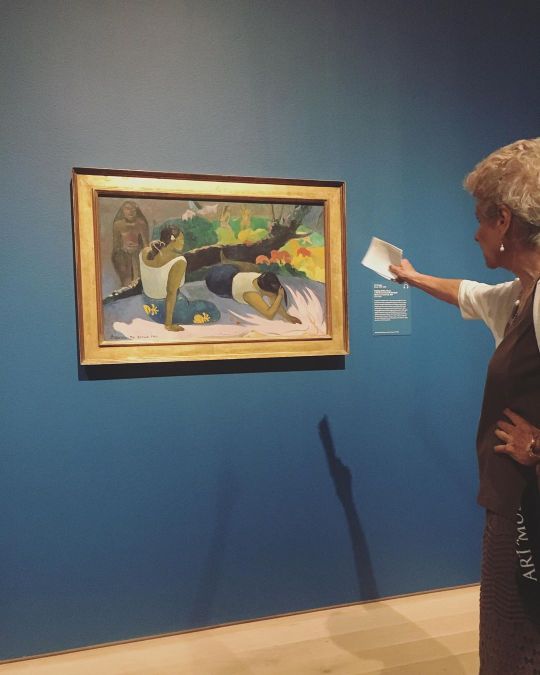
Paul Gauguin: The Art of Invention at The Saint Louis Art Museum
#NerdAlert: I’m a huge fan of museums. Like, I need to give myself pep talks to remind myself it’s not possible to see everything in one museum in one visit. As members of SLAM, my mom and I were invited to a free, guided tour through a new Gauguin exhibit, which is just another reason to consider supporting your local art museum.
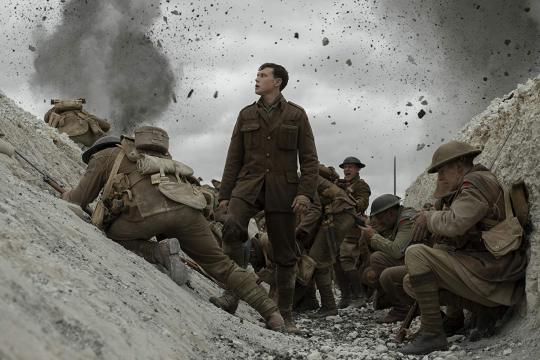
1917 trailer (2019)
Maybe Colin Firth was unavailable for a Kingsman sequel because he and Benedict Cumberbatch were filming this World War I film with a December release prime for Oscar season. Color me intrigued again.
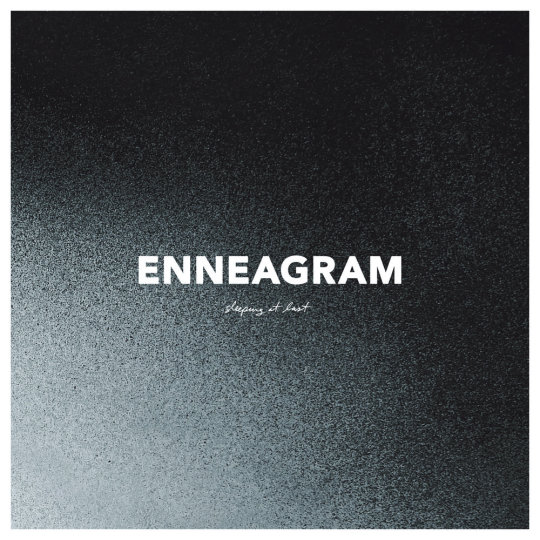
Atlas: Enneagram by Sleeping at Last
I’ve been learning a lot about the Enneagram in the last year, and no personality test (for lack of a more accurate term) has helped me understand how to love others and myself better than this one. I loved the artistry and thoughtfulness behind this album, which brings each type’s longings and fears and strengths and faults into song. (And not just because they’re coming from a fellow 9.) Bonus: There’s an accompanying podcast I’m still digging into.

Roman Holiday on the Big Screen
I caught a screening of one of my favorite Audrey Hepburn movies at the Tivoli Theatre, and she and Gregory Peck were truly larger than life.

Léon: The Professional
This month at ZekeFilm, we watched Natalie Portman movies we’d never seen before. I watched and loved her feature film debut, which came out the year she turned 13. She’s been a knockout from the get-go, and this movie holds up 25 years later. Crowd: 9/10 // Critic: 9/10
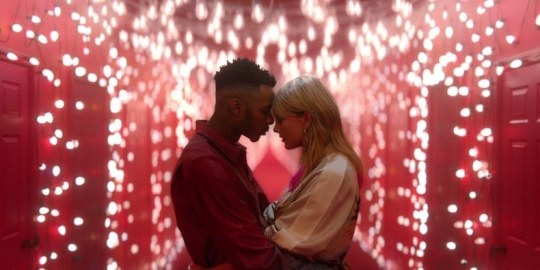
Lover by Taylor Swift
When she released Speak Now, I knew I’d buy the next 10 Taylor Swift albums, and Lover might be in the running for my new favorite of her collections. (I’ll have to listen to it 100 more times to be sure, so come find me in about two weeks.) I loved reputation., but her lyrical prowess and synth-y production have met in a magical and mellifluous 18-track opus. The first five tracks are chef’s-kiss perfection, that “Lover” music video is an aesthetic dream. (t’s not every day I hear a song and immediately can hear it still on the radio in 30 years.) I don’t think she gets enough credit for her songs about friends and family, and some of her best are here as well. I’m both in awe and so proud as a decade-plus fan.
Also in August…
On SO IT’S A SHOW? this month, I watched a cult classic movie and a classic TV show with my pal and co-host Kyla Carneiro for our pop culture podcast. Catch our episodes on Ed Wood and The Carol Burnett Show (and how they connect with Gilmore Girls) on our Tumblr.
I watched 1960s crime thriller Midas Run on Kino Lorber’s new Blu-ray for ZekeFilm. It was…not good.
Until next time, follow what films I’m watching in real time on Letterboxd and find more reviews and features at ZekeFilm.
Photo credits: The Micheaux Mission, Rolling Stone, Sleeping at Last, Taylor Swift. Paul Gauguin and Tivoli Theatre my own. All others IMDb.com.
#Fast & Furious#Fast & Furious Presents: Hobbs & Shaw#Hobbs & Shaw#Minority Report#Veronica Mars#I Feel Pretty#Micheaux Mission#The King's Man#Rolling Stone#Paul Gauguin#St. Louis Art Museum#1917#Atlas: Enneagram#Sleeping at Last#Roman Holiday#Léon: The Professional#Lover#Taylor Swift#Othello#The Talented Mr. Ripley#Dwayne Johnson#Dwayne The Rock Johnson#The Rock#Jason Statham#The Crown#Steven Spielberg#Tom Cruise#The Matrix#Star Wars#The Americans
0 notes
Audio
(Micheaux Mission)
1 note
·
View note
Photo





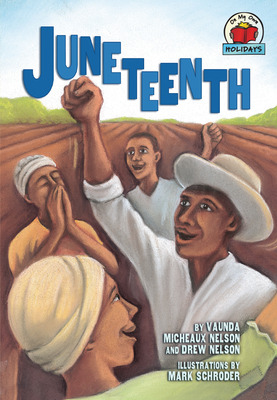

🙌🏿Juneteenth: 6 Children’s Books
The books listed tell how on June 19, 1865, enslaved Blacks in Galveston, Texas heard Union General Gordon Granger recite General Order, No. 3, which partially read “The people of Texas are informed that, in accordance with a proclamation from the Executive of the United States, all slaves are free.” That was the beginning of Juneteenth celebrations in Galveston, Texas and the celebrations have since spread all across the world.
📖Opal Lee and What It Means to Be Free: The True Story of the Grandmother of Juneteenth
Alice Faye Duncan
Keturah A. Bobo
Thomas Nelson
January 18, 2022
📖Juneteenth: A Children's Story
Opal Lee
Peter Viska
Unity Unlimited Inc.
📖Juneteenth for Mazie
Floyd Cooper
Capstone Young Readers
📖All Different Now: Juneteenth, the First Day of Freedom
Angela Johnson
E.B. Lewis
Simon & Schuster BYR
📖Juneteenth Jamboree
Carole Boston Weatherford
Yvonne Buchanan
Lee & Low Books
📖Juneteenth (On My Own Holidays)
Drew Nelson
Vaunda Micheaux Nelson
Mark Schroder
First Avenue Editions
Follow/Subscribe: Twitter | Instagram | Facebook | Newsletter
If you believe BCBA provides a valuable service, please take a few minutes to donate here or via Cash App ($BCBooksA) and support our mission to promote awareness of children’s and young adult literature by Black authors.
Thanks for your support!
594 notes
·
View notes
Text
Film Commentary: “Sugar Hill” (1974) starring Marki Bey in a unique anti-hero performance

Sugar Hill came out of an era where there was a LOT of changing ideas about race, gender, and power dynamics. The civil rights movement had taken place, the Black Power movement, the women's liberation movement. The oppressed all around the country were throwing out the old constraints, challenging the old prejudices and repressive way of moving, and this shift in society was being reflected in a BIG way in cinema. One of the emerging aspects of social change was the Blaxploitation movie trend that started in the early 1970′s and brought forth now-beloved classics like Blacula and the Shaft series. Things were beginning to reflect a new way of viewing the world and members of an historically victimized community were being shown in a wide variety of bold, heroic, sexy, take-charge and all-around bad-ass ways. One of the earlier 'quiet revolutions' in cinema was the race film era which started in the earlier part of the 20th century and stretched all the way to the 1940′s. Many of the films made in this period were created by the cinematic visionary, novelist and Black filmmaker, Oscar Micheaux (I highly suggest his movies!). The strong focus then was on middle-class and wealthy representations of African-American life in order to challenge racist, false and mean-spirited caricatures of Black people's images, ambition, and place in society. However, when the '70s and Blaxploitation films rolled around, Black people from MANY corners of life-- the urban, the fighter, the vigilante, the reporter, the detective, the cop and in 1974's underrated horror classic, Sugar Hill, the female boss of an army of the undead, were put on center stage, and man was it a a unique time for cinema. Not to mention, a whole lot of fun!
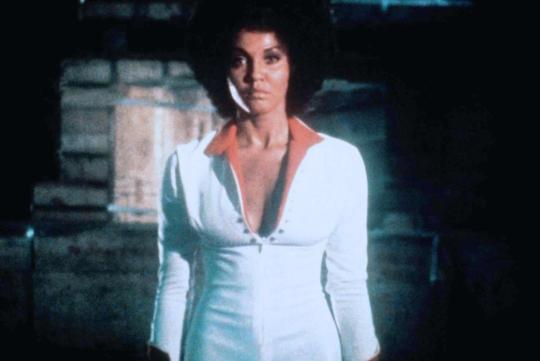

Voodoo has been used very frequently in the horror genre, an ongoing theme of retaliation used by the persecuted, that has usually had all sorts of racial and cultural symbolism attached to it. In Sugar Hill, it is used as a tool of achieving justice by a young woman and brand new club-owner, Diana 'Sugar' Hill (played by the remarkable Marki Bey), who would otherwise be ignored and dismissed by the authorities and the whole unjust, racist, sexist set-up. Diana, a photographer in Houston, Texas, is a woman alone after her boyfriend Langston is killed by gangsters headed by a ruthless boss called Morgan, who are after control of the club he owns, which now passes to her possession after his death.
Langston is brutally murdered, beaten to death, and Diana goes vigilante. How is she doing it? Through supernatural means of course. And she does not fail to exact the vengeance she feels she is due, with the powerful spirit, Baron Samedi, lord of the dead (played by the theatrical, scenery-chewing and utterly fabulous actor Don Pedro Colley who became somewhat of a horror/scifi legend himself in other ‘70s films like Beneath the Planet of the Apes and THX-1132).
Helping her every step of the way is Mama Maitresse, played by the experienced actress Zara Culley in a pivotal and genius performance.


Diana and Baron Samedi along with a hoard of blood-thirsty, yet totally controlled zombies, go after the gangsters responsible for the death of her beloved in increasingly grisly and campy ways.
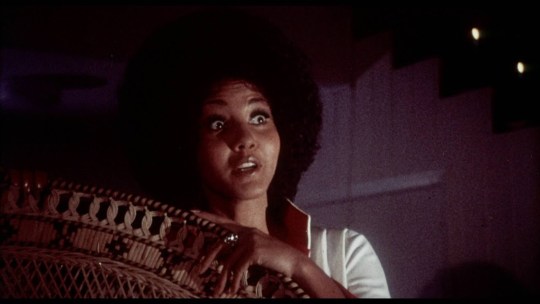
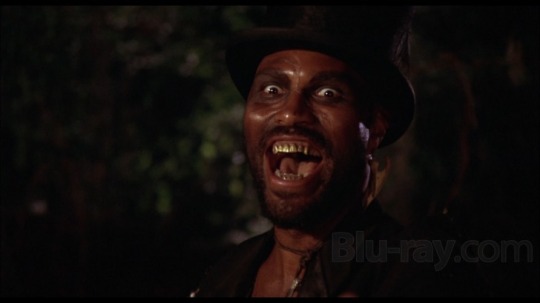
Diana's mission of vengeance is peppered with sharp and memorable one-liners, as in one scene where one of the gangster henchmen is tossed into a pen of some VERY hungry pigs, "I hope they like white trash!" and it is obvious that Diana is written very pointedly as an anti-hero but with an emotional core. She is slapped around by several members of the mostly white gangster crew, called racial slurs and degraded, particularly by the crime boss’s ragingly insecure and hateful White girlfriend who *violently* tries to make Diana feel two inches tall. Which by the way is a scene that Diana wins in her own self-defense.

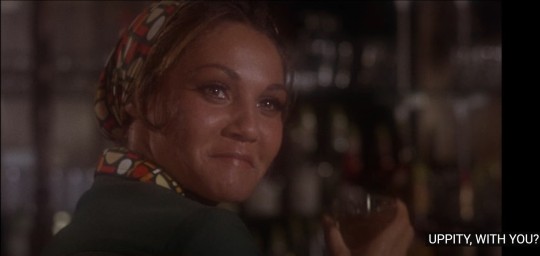

Ooooh! Put some butta’ on that burn.
None of this rack of bigots and thugs know her true secret weapon however, and it is with this supernatural power that she takes control of her life and makes those who brutalize her feel the pain of their own actions. It is quite honestly, a fascinating representation of the rage of an oppressed woman, simply in horror form, and with a bigger budget and more nuanced writing, it might've been a significant horror AND social commentary work on racism, misogyny and and how they meet in the middle for women of color like Diana, and the lack of respect she receives in her interactions with the powerful White people surrounding her. However, the 1970′s was so often the era of quickly cashing in on movie trends, so the depth that could've been here, is not as present as it could've been, with occasional flashes of brilliance however.

Strutting and swaggering through dark corners, she wields her pack of shambling assassins with a cool authority like a '70s mob boss of the underworld. With a police detective (played by Beyonce's step-daddy, the seasoned character actor Richard Lawson), slowly beginning to get hip to her diabolical plans, she stays in control, not even breaking a sweat as she lures the last (and most important) person responsible for her fiance's death, the White kingpin Morgan, to his demise.


The cool thing about this movie is the utter gutsiness of it! It just doesn't give a damn. It's pure gloriously campy entertainment from beginning to end, combining a whole bunch of horror and blaxploitation elements in the mix--from the tried and true voodoo and walking dead tropes to taking Marki Bey and trying to fashion her into a horror version of Pam Grier who was herself at the height of her popularity during this time. But I cannot stress enough how much Marki Bey's interpretation of a modern woman deeply enmired in ancient rituals, lifts what could've been a formulaic flick into something dynamic and exciting! She wrestles the movie away from the routine and through the sheer force of her feisty, charismatic performance, it becomes a stylish thriller instead of shlock like many of the B horror movies from the decade. And while showcasing Bey's character Diana in a genre that had commonly overlooked Black women's presence, it also showcases a woman in charge taking action outside of what had been the usual moves assigned to women in horror, a genre that so often had assigned females to being trapped in mortal peril, either ending up as targets or weak characters needing to be rescued. It’s a presentation that becomes doubly significant because of what race and gender bring to the story.
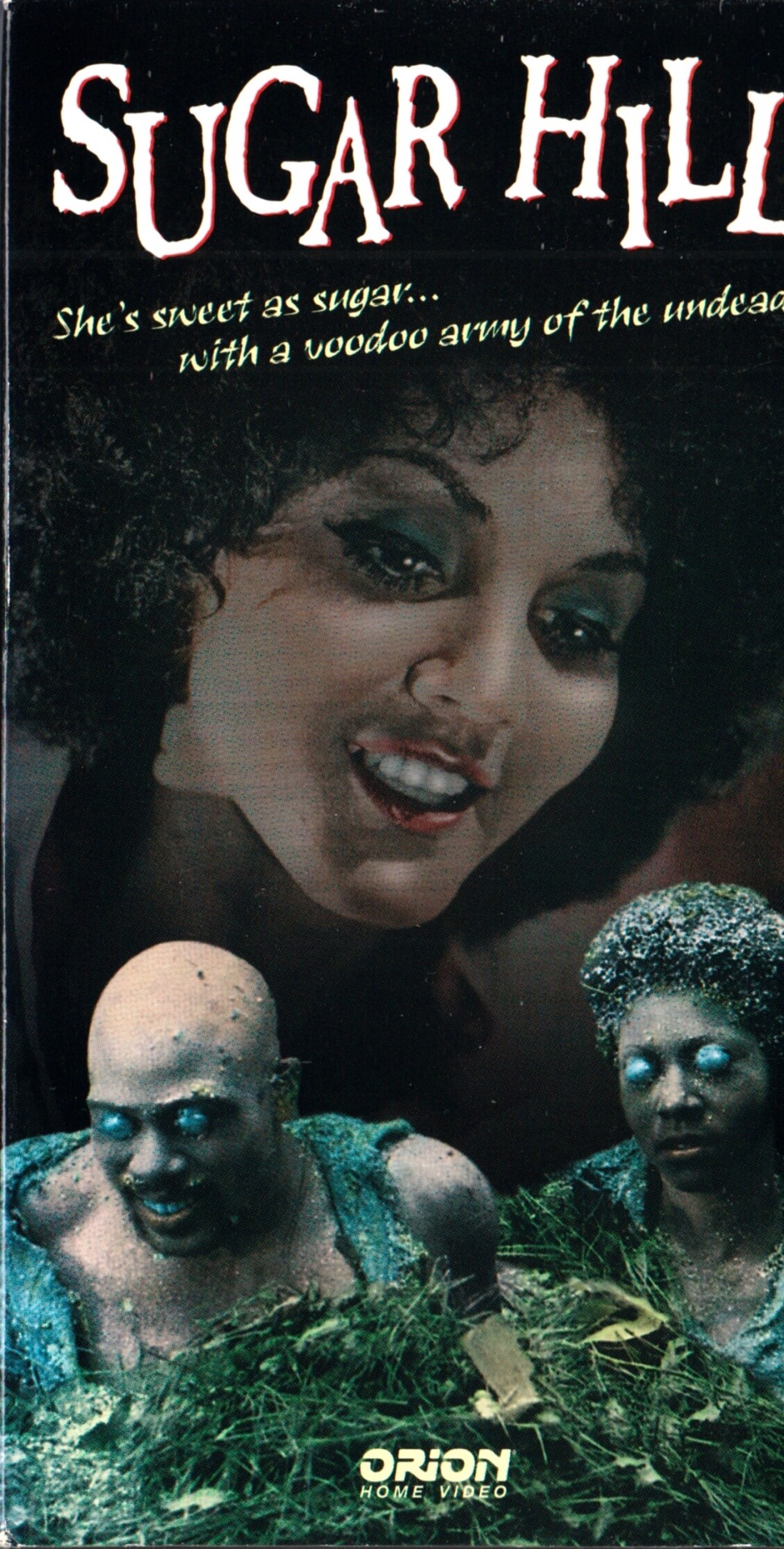
All of it has an organic, even gritty flow, even within the context of the campiness and pure outrageousness!
In further exploration of the racial, gender and even color dynamics of Diana's presence as a horror movie anti-hero, it gets even more complex, at least to me, when you go digging deeper. The casting of a more ambiguous, lighter skinned actress of color amidst the violent themes of these specific types of voodoo rituals and revenge shown, I don’t really feel was all that random. There's been a curious depiction of association of Black women with voodoo in horror movies to the point where it's become a genre trope. And from my own personal observations as a horror fan and a woman of African American heritage myself who has tried to pay attention to representation particularly in the horror genre, it seems that it's also at times been closely associated with women of mixed heritage in both fiction and screen...call it the "Marie Laveau effect".

(Films that are examples of this stretch all the way from the 1930′s like Ouanga: The Love Wanga starring Fredi Washington, Chloe: Love Is Calling You starring Olive Borden and The Devil’s Daughter starring Nina Mae McKinney to 1987′s Angel Heart starring Lisa Bonet.
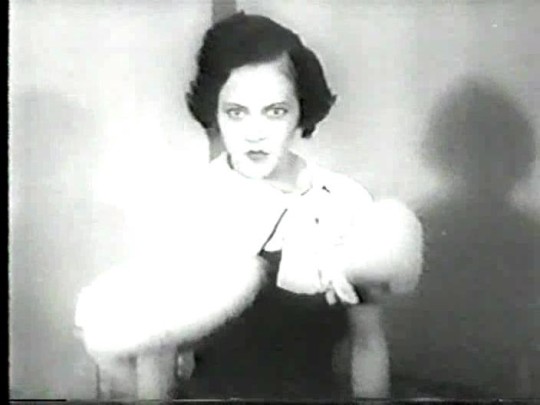
(Fredi Washington in 1936′s Ouanga)
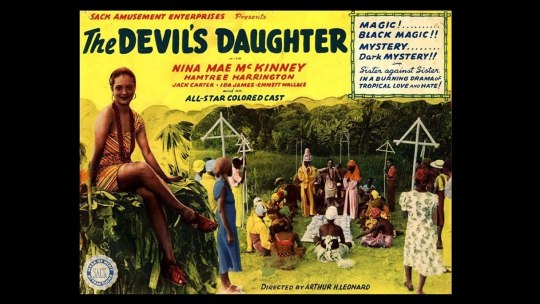
(Nina Mae McKinney in The Devil’s Daughter)

(Lisa Bonet in Angel Heart)
There seems to be some type of cinematic history where mysteriousness, seduction and intrigue becomes so intense, it damn near tips over into the supernatural with ambiguity and “mixed-race-ness” in women of color. Perhaps it’s been a subtle commentary on the nervousness a racially divided American society has had with even the barest hint of miscegenation--a quiet anxiety with the physical proof of Whites and Blacks having had children together.
History lesson: a large number of Creole families in Louisiana and the Caribbean ultimately descended from the offspring of African women and French and Spanish men. The action of Sugar Hill is set and shot in Houston, Texas and from my own personal knowledge of the Creole community and from family connections to that community, I know many families migrated westward to Texas out of Louisiana years before. Some interesting info on the migration:
In the decade following World War I, thousands of Louisiana migrants with French surnames began moving to Houston, most identifying as Creoles of color. The first wave of migrants came in search of labor. A second wave of migrants moved to Houston after the Great Mississippi Flood of 1927 ravaged parts of Louisiana. They established a community on the city’s north side called Frenchtown.
LINK
So, there could be an unspoken 'Creole' link they attempted with Diana Hill's character in this movie--combining Hollywood smoke and mirrors with this imagery of a specific corner of Black American history and mixed heritage peoples with voodoo magic. If you can get past that somewhat stereotypical aspect though, you *can* still enjoy how Marki Bey the actress skillfully handles the utter and supreme confidence Diana has in herself as a woman entitled to justice, as warped and off the wall as her actions may be.
But off the wall, unconventional and outright crazy WERE some of the qualities describing some of the most fun Blaxploitation films of the ‘70s (Cotton Comes To Harlem was another wild ride).
Marki Bey herself was someone who was beginning to make a splash on movie screens, having previously co-starred in the razor sharp satire on race and *attempted* gentrification called The Landlord where she played a Biracial go-go dancer Lainie (hey, it was the ‘70s) who has a romance with an earnest but clueless rich White guy, played by Beau Bridges. Bridges becomes the brand-new owner of a tumbling down inner city apartment building to unexpected and hilarious results with Lainie falling deeper and deeper in love with him, despite the barriers his snooty uber-WASP family tries to put up.
She was a refreshing personality in the acting world--talented, feisty and brimming with charm! She also had a sophistication that worked really well to underscore the manic intensity of Diana in Sugar Hill. It was a fascinating juxtaposition of elegance with menace. Charm with *albeit justified* venom.


As I mentioned before, with a tighter screenplay, it could've been damned near a masterpiece, maybe even approaching the level of one of the old Universal horror movies. But as it is, it's a rollicking good ride of thrills, chills and gore, with an interesting social message.
Marki Bey left the acting world after her cluster of appearances in the 1970′s. Her heyday was during this very exciting period of people of color throwing away the discarded assumptions of their humanity and making new ground for a bold, fresh kind of filmmaking that broke all the rules and created new icons.
Sugar Hill may not have reached the level of fame or artistry within the Black horror genre as a Blacula or even Ganja & Hess, but not only was it entertaining as hell, it was also a cool time capsule of attitudes, style and personality that will never come again. A preserved moment in cinematic and African-American history. And for that, it's definitely worth the watch. Enjoy!
Full movie for free on YouTube:
youtube
#marki bey#sugar hill#classic film#women in film#old movies#classic horror#horror movies#1970s#Blaxploitation#campy movies#women of color#black women in film#Black actresses#Biracial actresses#Texas#Divas Damsels & Smudged Mascara#movie review#film commentary#blogging#film bloggers#movies#old Hollywood#classic Hollywood#Black cinema#Black films#classic movies#classic actresses#thrillers#horror
44 notes
·
View notes
Text
I have upset myself too much and now I'm having a panique attaqué like the fool I am. This Micheaux Mission podcast episode of The Watermelon Woman betta heal me or I'll start crying


2 notes
·
View notes
Photo



CULLEN NPCS ; MAGES FROM KIRKWALL .
DANIEL MICHEAUX . orlesian born . 34 years old . necromancer / inferno .
AMANDA VITELLI . marcher - born antivan . 16 years old . frost .
SIERRA ROSE . marcher born . 27 years old . force / spirit .
amanda vitelli was the first mage of the three that cullen wanted to help . having just been brought into the kirkwall circle after freezing a portion of a lake , amanda was the most terrified and one of the youngest mages in the circle at the time ; she was 12 by 9:37 dragon . with cullen growing to see the pains and struggles for the mages in kirkwall , he did not wish to see amanda hurt by the templars or the enforced rules that would continue to get worse .
daniel micheaux was a transfer from an orlesian circle in 9:34 dragon , on the premise that he was acting extremely out of line and “ needed more discipline ” in a harsher environment , hence kirkwall . although cullen and daniel did not get along at first , it was when daniel sought to protect the younger mage that cullen was quick to change his mind .
while mustering up a plan to abuse his knight - captain status , sierra rose was quick to catch on and beg to join the other two mages to leave . seeing her wit and charisma easily defeating his logic of “ too many will raise suspicion ” , cullen figured that sierra would be a great balance to daniel’s spontaneity . it also happened that sierra was planning to become a teacher of sorts , and her magic is specific to protection and even some healing , which helps given that daniel had no healing capabilities and what amanda knew was limited .
these three mages were soon sent away via carriage northwest , into nevarra , where daniel took the chance to hone his necromancy skills . they then started to travel south through orlais to avoid the free marches , reach ferelden and make it to redcliffe with the other mages .
WAR TABLE OPERATION . ( BELOW READ MORE . )
OPERATION NAME : Cullen ; Searching for Friends .
ACQUISITION : this mission is available to the inquisitor after completing “ in hushed whispers ” or “ champions of the just ” . speak to cullen to start the quest .
OPERATION TEXT :
Inquisitor,
I have a favour to ask of you. There are three mages I saved from the Kirkwall Circle that I fear may be in danger due to the Mage-Templar War and the Breach. Their names are Daniel Micheaux, Amanda Vitelli, and Sierra Rose. Evidence suggests that after I had sent them off under false names to Nevarra, the three of them travelled back south into Orlais. I believe they were intending to reach Redcliffe to join the other mages there.
If we could spare some scouts to search the Emerald Graves, which is where I’m sure they would be located, I would greatly appreciate it... And I would be in your debt. Those three were the beginning of my new life with a new view, and I would hate to see them hurt, or worse.
Cullen
ADVISOR SUGGESTIONS :
JOSEPHINE - 3:00:00 .
I could ask some mage sympathisers in the Orlesian courts to search for Cullen’s friends. They will know the land well.
LELIANA - 2:35:00 .
If Cullen wishes for scouts, I have just the people in mind. They will bring his friends home safe.
CULLEN - 2:50:00 .
As Commander, I could send a small group of non-Templars to find them. It might help that they’re sent from me.
RESULTS :
JOSEPHINE .
They were found hiding in a cave not too far from some Red Templars. Thankfully, the Marquise in the local area had sent some well-known chevaliers to escort the three mages back to safety.
Though rightfully suspicious, they have accepted personal escorting to Skyhold on behalf of the Inquisition, and they will be arriving very soon. The Marquise does expect a favour in return for this, I must warn. Not of you. She was very adamant that the returned favour must be of Cullen’s duty.
Josephine
A note from Cullen is added below:
My thanks. But tell the Marquise I shall not dance, if that is what she wishes in return.
Cullen
LELIANA .
My scouts have found the three and escorted them to Skyhold. There was some trouble with Red Templars, but they remained unscathed.
Leliana
A note from Cullen is added below:
Thank you, Leliana. I have talked to them since they arrived. They have all expressed gratitude that you have brought them here safely.
And might I add that Amanda wishes to meet you.
Cullen
CULLEN .
Our troops have found Daniel, Amanda and Sierra. Having them as non-Templars and their presence being by my word earned the trust of them all, and they will be arriving in a day or two. Amanda drew me a nug in the corner of the letter they’d sent by raven. She’s still very sweet.
Thank you, Inquisitor, for allowing me to do this. As soon as they arrive, I will be able to rest a little easier knowing they’re safe.
Cullen
REWARDS FOR THE INQUISITOR .
JOSEPHINE AND LELIANA : 60 influence .
CULLEN : 60 influence , enhanced amulet of constitution .
#* pick up your sword and fight ‚ lion of war ! / muse : cullen .#/ HOO BOI#/ i deadass wrote an entire war table operation huh .#/ Dedication at its finest#/ soooo when i mentioned he smuggles mages out did i also mention they're poc#/ because now u know#/ i'll have to make tags for these guys but :ok_hand:#/ edit : tumblr really just had to murder the quality of the images huh :/ rude :/ :/
2 notes
·
View notes
Text
Coeur to Carousel
Location: Basilica of Sacré-Coeur
Time: Spring 1910, Annette Michaeux is 8 years old
Trigger Warnings: Mentions of death, blood, and hunger.
Word Count: 1,724
“I’m still hungry.”
“You’re always hungry.”
“Because there’s never enough to eat.”
Annette is chewing on the last of her crust of bread, freckled nose raising to the sun as she looked up at the two older boys in their gaggle of half a dozen as they speak. The nuns of the Basilica Sacre-Coeur used jam today on their handouts -- she thinks it is blueberry, but she cannot be sure. It’s stale, but the jam does a good job of covering it up. It’s nice. A little extra treat for surviving another day and a perk of being poor and motherless..
“If we get our hands on a purse or a fat wallet we could get some jambon-beurre as big as our heads. Each of us. I saw a stand selling some down the hill--”
She continues to lick the last of the jam from her fingers, not quite willing to part with the taste yet. It’s always been the better idea to allow Anton and Hugo come up with the plans -- it’s not as if anyone would ever take her opinions into account anyway, seeing as she’s not only the youngest but also the smallest...She’s only half listening, but she has to admit that the idea of ham thrums a faint rumble in her stomach. However, she knows which part of the conversation comes next.
“Who’s gonna rope then?”
“Princess, of course.”
(It’s a nickname she’s earned around the circles of urchins, young pickpockets, and brothel wards. She had a tendency to chatter on about fairytales to anyone who would listen, whatever story Lusine has been spinning for her as she falls off to sleep. Princes and castles and giants and fairies…)
Annette whines from her seat on the ground against the shadowed basilica exterior, the stones cool from their shade on one of the warmer spring days they’d gotten after a terrible winter. She’s just shy of stamping her feet in protest.
“Why me? I did rope last time! And the time before!”
“Because you’re little. And cute. And people always stop for you,” Anton reminds her.
(Anton -- arguably their leader -- is a boy of thirteen, with dark hair and blue eyes. Five years from this moment, almost to the day, he will be Annette’s first kiss. It will not be one of her happier memories.)
“And you look the part today.”
That earns a scowl that the boys laugh at, the kind where she is attempting to look fearsome but unfortunately looks more adorable due to her stature. She’s offended, she’s just had a bath that morning after much nagging from Lusine, and her skin smells of rose water. However, her face is smudged with dirt and bits of jam on the corners of her mouth, and her curls are wild from running in the wind all morning.
“And there’s a beignet in it for you, if the bounty is enough.”
With a grudging huff exhaled from her lips, they know they have her. Beignets were her favorites -- she could never pass the opportunity to have one.
“Come on then, let’s shop for a mark,” Hugo agrees, reaching down to take Annette’s hand and pull her to her feet.
(Hugo had always been her favorite of the boys, more soft spoken and sensible in his plans. He’d always indulge when she wanted to play pretend. In less than a handful of years he’d join the army, too young, and be lost in the mud of some foreign trench in the war.)
Young faces peek out from behind the pillar to survey their options. Sundays are always the most busy at the Sacre-Coeur -- couples strolling hand in hand, families having picnics, musicians of all kinds and artists with easels painting the scenery…
“That one,” Anton concludes after a moment of passed suggestions among the miniature hoarde, pointing out a woman in a deep blue dress and a fine hat, She’s holding a parasol with black lace so intricate that Annette aches to simply touch something that pretty…
“She looks English.”
“Good. The English are dumb fuckers. She probably won’t even notice that it’s gone.”
The youths all laugh to each other as if they are masters of intricate humor. After a moment they recover, some pairs still breaking out in fits of giggles. Their band is a well oiled machine of foolery, and they all know their roles, so they emerge from their hiding spots one by one and mingle into the crowd.
“Put on a good show,” Anton reminds her, tugging on a handful of her hair as he passes in the , making Annette yelp in surprise and pain. She’s about to start after him with the intent of a wallop, mission forgotten and tiny fists clenched, when Therese grabs her by the collar of her dress and pulls her back into the shade.
“We’ll all meet down the hill at the carousel, alright?” Therese reminds her, licking her thumb to wipe the jam from the side of Annette’s mouth and making an attempt to flatter her hair. Annette growls in disdain and swats her hands away.
(Therese is older by four years has the same curls as Annette, only they are chestnut in color, and they share the same skin that is prone to freckling. She lives in a brothel with her own mother on the same street as Annette. Therese will be dead just shy of her eighteenth birthday. Strangled, in the bed of a patron. Annette will never know that they shared a father.)
“I know what to do.”
“Be careful.”
Annette scoffs as she remains the only one hidden by the architecture, muttering ‘I’m careful’ stubbornly under her breath to herself as she takes a step back into the shade. With several deep and rapid breaths, she works herself up to tears, cheeks rosy with the effort. She strides easily into the sunlight, making her way in the direction of the English woman who appears to be waiting for someone -- she makes use of her eyes, making them look wide and forlorn and lost.
She’s played this game dozens of times, but she’s gotten better at not anticipating the next move of the plan -- of Leon sprinting through the crowd, seemingly without warning, and knocking her down to the ground at full force where she lands at the woman’s feet. People in the near vicinity gasp as the little girl in the tattered dress with faintly red hair whimpers out in pain, knees skinned red and bleeding from the stone and palms scratched raw from catching herself. The pain makes it easily for the tears to come fully and spill over her rounded cheeks.
“You poor dear!” The woman in blue coos with concern as she steps to the young girl, extending a hand to pull her carefully to her feet. “Are you alright? Where is your mother?”
“I cannot find her!” Annette sobs in performance, the language barrier working effectively as the woman asks if she can speak any English. “I am so lost! Help me, madame, please! I am frightened!”
With that, Annette flings her arms around the woman with a wail, burying her face into the skirt with effective, yet fake, tears of distress. The woman is taken so off guard by the sudden outpouring of emotion that there’s no way for her to prevent Anton, quick as lightning, yanking the handbag from her wrist and taking off down the stairs and darting between day revelers before she has the chance to object.
It’s always Netty who must be quick escape the aftermath.
While the woman shouts to police nearby, a man grabs Annette’s by the wrist in an attempt to prevent her escape. Luckily, her teeth clamping down on his hand make quick work of that problem, and soon her small form escapes into the crowd. Thin legs spin beneath her as she takes off as fast as she can down the steep stone steps of Sacre Coeur. It doesn’t help that she’s bleeding -- that Leon pushed her far harder than what was necessary and that every stride makes of shoots of stinging pain. Plus, one of her shoes has been falling apart for days and how now at this moment decides to give up the ghost, its strap breaking flying off her foot and causing her to stumble over the edge of a step and in danger of falling down dozens of stairs that would hurt far more than skinned knees--
When she is swiftly caught by the elbow and pulled back to balance.
“Steady on.”
For a moment, Annette clings to her savior for reassurance like a frightened kitten without looking at their face, breathless and hands shaking as she clings to the white shirt sleeves waits for her stomach to catch up with the rest of her.
It can’t be a long moment, but it feels like it.
“You look hurt, do you need help?”
It’s then that Annette can hear the police whistle and the angry commands of ‘STOP’ in her native tongue. Any head start she had, she’s lost due to her fumble.
“I am fine, Monsieur,” she answers in French, flashing a smile through her panted breaths at the young man who caught her. He can’t be much older than sixteen, not yet a man. Dark hair. Well dressed and tailored. English accent, with skin that seems to glow bronze in the sun. She doesn’t think she’s ever seen eyes as dark as his before, and it takes another police whistle (closer now) to remind her where she needs to be.
“But your shoe-- You’re bleeding--”
“I’m fine,” she chirps in repeat as she back away from him, watching the police near over his shoulder from one flight in the distance. “Thank you for catching me --”
And with that, she’s off once more with a squeal, leaping off the stairs for the safer path down the grass of the hill as the officer storms past the young man in pursuit.
She’ll reach the carousel uncaught, and she’ll be met with shouts of praise from her cohorts. She will get the beignet she was promised and eat it in three bites.
(Annette Micheaux thinks she met Bhari Sinclair for the first time the night she fell into his lap at the Moulin Rouge. However, she isn’t correct.)
3 notes
·
View notes
Text
Have you ever wondered why there aren't more films featuring African-American actors?
Micheaux Film Festival is a non-profit organization that highlights African-American representation in film and television. Founded by Tim Reid and his son, Richard Reid, Micheaux Film Festival was created to promote diversity in filmmaking. The festival focuses on films that feature black actors, writers, producers and directors.
The festival takes place every year in November. It usually lasts for about two weeks and includes screenings of films from around the world. Micheaux also hosts panel discussions with industry professionals who share their experiences with viewers, as well as workshops where aspiring filmmakers can learn how to make their own films.
We offer a range of services including:
Organising events such as film festivals, screenings, workshops and seminars
Distributing script development support packages to aspiring writers
Producing educational materials such as books, DVDs etc.
Micheaux Hollywood Film Festival is a multicultural and Los Angeles film festival that celebrates diverse representation, gender and identity parity, and boosts visibility in the entertainment & media landscape. Our festival seeks to cultivate a dynamic community that gives artists the platform to share their unique stories.
We also encourage submissions from independent filmmakers who don't have representation or a distributor yet. If you are interested in having your film screened at the festival, please note that we can only screen films that have been completed by January 1st 2020. The deadline for submissions is December 31st 2019 at midnight EST/EDT (GMT-5). All submissions must be made via Film Freeway and cannot exceed 15 minutes in length (including credits).
Please ensure that you have read our submission guidelines before completing the online submission form on Film Freeway’s website: In addition to filling out the form, please also attach a letter explaining why we should consider screening your film at this year's Micheaux Film Festival. If possible, please also include any previous reviews or awards won by your work along with any other relevant information about yourself as an artist (e.g., previous work experience).
We hope you'll join us as we continue our mission of providing opportunities for filmmakers from diverse backgrounds to showcase their work—and the people who created it!
At Micheaux Hollywood Film Festival we pride ourselves in our standards of fair consideration for all projects & voices while continuing to push boundaries with each new year.
https://deadline.com/2021/04/micheaux-film-festival-april-amc-century-city-robert-townsend-1234734841/
0 notes
Text
Astronaut Suni Williams Prepares for Crew Flight Test
NASA/Frank Micheaux
NASA’s Boeing Crew Flight Test astronaut Suni Williams gives a thumbs up during a mission dress rehearsal on Friday, April 26, 2024, at the agency’s Kennedy Space Center in Florida. Williams was selected as an astronaut by NASA in 1998 and has been aboard the International Space Station twice. She is set to return to the space station for a third time, traveling aboard…

View On WordPress
0 notes
Text
Micheaux Mission podcasters pick the summer's top movies
Micheaux Mission podcasters pick the summer’s top movies
two men. One podcast. Every Black movie.
That’s the tag line for Philadelphia-based movie buffs’ Len Webb and Vincent Williams’ popular podcast, The Micheaux Mission.
Named after Oscar Micheaux, the early 20th century Black indie screenwriter, considered the first Black film maker, The Micheaux Mission offers listeners funny and insightful reviews of the acting, directing, storylines, and…
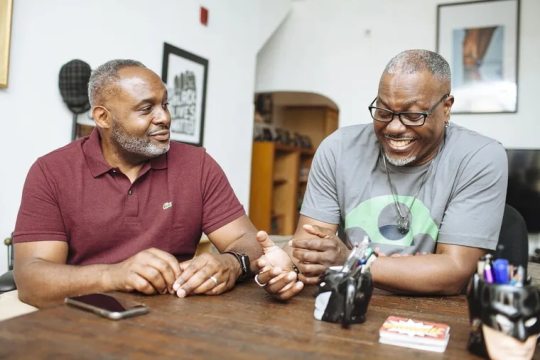
View On WordPress
0 notes
Text
The Cat Who Won’t Cop Out: Shaft as the ‘70s Black Superhero by Jason Bailey
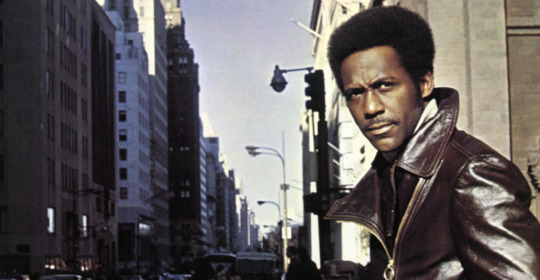
(The following essay is excerpt from Jason’s new book, It’s Okay With Me: Hollywood, the 1970s, and the Return of the Private Eye.)
The first thing John Shaft (Richard Roundtree) does in Gordon Parks’ Shaft, after emerging from a Times Square subway station below the grindhouse movie theaters that would eventually and enthusiastically screen his adventures, is walk into New York City traffic (Shaft can’t be stopped, even by Eighth Avenue) and flip off the driver who gets too close to him. Meet your new action hero, Middle America; here is his message to you.
Shaft came early in the so-called “blaxpoitation” movement—a period, running roughly from 1970 to 1975, that saw an explosion of films made for, about, and often by African-Americans. This was an underserved audience; with the exception of independent “race picture” makers like Oscar Micheaux and Spencer Williams, their stories simply weren’t told onscreen, and they certainly weren’t told by mainstream studio films, which consigned black performers to subservient roles (or worse). The winds started to shift in the 1960s, when Sidney Poitier became a bankable name and Oscar-winning star, but he was the exception to the rule. It wasn’t until football star-turned-actor Jim Brown leveraged his supporting turn in the 1967 smash The Dirty Dozen into bona fide action hero status that this untapped swath of moviegoers, hungry for entertainment and representation, began to make itself known.
1970 saw the release of two very big (and very different) hits: Ossie Davis’ high-spirited crime comedy Cotton Comes to Harlem, and Melvin Van Peebles’ provocative, X-rated (“by an all-white jury!” boasted the ads) Sweet Sweetback’s Baadasssss Song. Peebles’ film was, essentially, the black Easy Rider, a rough-edged road movie with a decidedly European sensibility that grossed something like $15 million on a $150K budget, a return on investment so huge, the (flailing) studios couldn’t help but take notice.
Shaft was next down the chute. Adapted by Ernest Tidyman—who also wrote that year’s Best Picture winner The French Connection—from his 1970 novel, the film was helmed by Gordon Parks, the influential photographer who’d made his directorial debut in 1969 with the autobiographical The Learning Tree. MGM gave him a modest $1 million budget; model-turned-actor Roundtree was paid a mere $13,500 to play the title role. (Isaac Hayes was among the actors who auditioned, and though Parks passed on his acting, he hired Hayes to compose and perform the picture’s iconic funk score.)
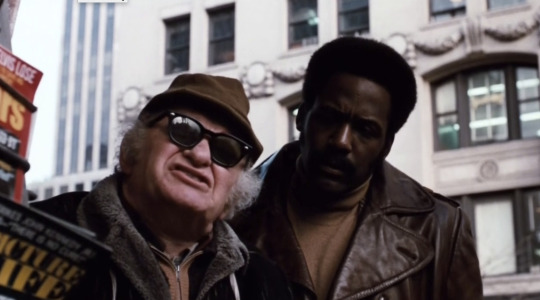
“Shaft essentially was a standard white detective tale enlivened by a black sensibility,” wrote Donald Bogle, in his essential Toms, Coons, Mulattoes, Mammies, & Bucks. “As Roundtree’s John Shaft—mellow but assertive and unintimidated by whites—bopped through those hot mean streets dressed in his cool leather, he looked to black audiences like a brother they had all seen many times but never on screen.” He’s right on both scores. Shaft, who is smirkingly called a “black Spade detective,” is embroiled in a commonplace private eye narrative, engaged by a lying client (uptown gangster Bumpy Jonas, smoothly played by Moses Gunn) to find a missing girl—in this case, the client’s daughter. Shaft is a snappy dresser and sharp shooter; he uses the neighborhood bar as his second office.
But we’ve never seen a private eye who looks like this. Shaft leaves the shirts and ties to the cops and gangsters; he wears turtlenecks with his suits, along with that amazing leather coat. In the documentary Baadasssss Cinema, blaxploitation acolyte Quentin Tarantino is critical of the lack of action in Shaft’s opening credit sequence (“I’m semi-frustrated that [the theme] wasn’t utilized better,” he explains. “If I had the theme to Shaft to open up my movie, I’d open my damn movie”), but he’s underestimating the visual jolt of merely showing a man like Shaft strutting the streets of New York, and gazing upon him as he stakes his claim.
There’s something undeniably sensual about that gaze. Shaft was among the first major motion pictures to feature a black man of sexual potency—with the phallic overtones embedded right in his surname, and thus in the film’s title. He gets a full-on sex scene with his steady lady early in the film; later on, he shares a steamy shower with a white pick-up, a mere four years after the carefully sexless interracial romance of Guess Who’s Coming to Dinner.
But aside from that scene—and the iconographically loaded image, during the climax, of black militants turning fire hoses on white people—Shaft’s racial politics are surprisingly middle-of-the-road. Shaft may kid Lt. Vic Androzzi (Charles Cioffi) with lines like “It warms my black heart to see you so concerned for us minority folks,” but he humors the white cop, and mostly cooperates with him. The script is careful to disassociate its fictional black-power revolutionary group from real ones like the Black Panthers and the Young Lords, but it also shows them to be ineffectual, and Shaft is ultimately interested in their manpower, not their politics.

In other words, it’s a film that straddles its lines carefully, just as Shaft must code-switch between worlds: black and white, cop and crook, uptown and downtown (his black gangster client runs Harlem, but Shaft’s office is in midtown and he lives in the Village). Yet when it’s clutch time, Shaft is a full-on badass. In his first fight scene, the unarmed detective takes out two gun-wielding tough guys; in the climax, he swings in through a window like goddamn Batman, the black superhero rescuing the damsel in distress (stolen, not incidentally, by the white man).
Such elements became cornerstones of the blaxpoitation action template. Nelson George, who calls the film “a typical detective flick in blackface,” runs them down in his book Blackface: “black nationalists depicted as inept, if well meaning, supporting characters; young women, of all colors, are sexual pawns or playthings; white and black mobsters are in constant collaboration and conflict.” To that we can add a dash of respectability politics (Bumpy’s daughter is worth saving because she’s a “good girl” who’s “going to college”), righteous condemnation of drug dealing, and black characters working within the system while maintaining (though not without a struggle) their “blackness.”
Audiences ate it up. “Take a formula private-eye plot, update it with all-black environment, and lace with contemporary standards of on-and off-screen violence, and the result is Shaft,” opined Variety, predicting that “Strong B.O. [box office] prospects loom in urban black situations, elsewhere good." That was an understatement. Shaft’s $12 million gross helped save MGM, confirmed the audience that Cotton and Sweet Sweetback suggested, and prompted a flurry of imitators, including the following year’s quickie sequel Shaft’s Big Score!

Parks, Tidyman, and Roundtree all returned for the sequel—the latter with a healthy salary bump, to $50,000—though Isaac Hayes only contributed a single new song, turning over composer duties to Parks. Inexplicably, Hayes’ “Theme From Shaft,” which had won an Oscar in the intervening year, is nowhere to be heard, jettisoned in favor of a sequel song by O.C. Smith (and sequels, per usual, aren’t equal), a decision roughly akin to discarding the Bond theme after Dr. No.
It’s not the only questionable call. Instead of Lt. Vic, Shaft’s police foil is a smug black sell-out cop, whom Shaft calls a “black honky with big flat feet” and who is seen telling a black suspect, “Fuck your rights, go sue the city.” Shaft doesn’t really investigate a mystery this time around—the villain is revealed before our hero is, and the script stays that course—and no one actually hires him either. The script merely parachutes him into the middle of another war between Harlem gangs and the Italian mob. Parks was working with a larger budget, but you don’t see it until the third act’s tight car chase, followed by an ace boat/chopper sequence. The filmmakers clearly put their energies into a super-slick Hollywood ending—and it looks great. But they ended up sanding down what made the first film interesting; much of its uniqueness is in its rough edges.
The same goes for Shaft in Africa, which appeared the following year and took that character to the logical conclusion of his savior-warrior construct. Shaft is hired this time to penetrate a modern African slavery ring, and though he is initially resistant to the mission—he says the case is “out of my turf,” since “I don’t know any Africans, brother”—he ends up training and studying to go undercover as a native. Gordon Parks demurred from participating in this third and final installment, and white director John Guillermin (who would next direct The Towering Inferno and the 1976 King Kong remake) is extra careful with his camera placement during Shaft’s nude “stick fight,” but the sexual implications aren’t exactly subtle, and that’s before our hero smirks, “Guy named Shaft ain’t gonna be bad with a stick.” (Finally, someone said it.)

Africa has the broadest and perhaps clumsiest sexual messaging of the trilogy (and that’s putting aside its weird female genital mutilation subplot—don’t ask). Late in the film, our hero is seduced by the arch-villain’s insatiable white mistress, who initially queries, “How long is your phallus, Mr. Shaft,” and later tells him, “You’re the first man who’s ever made love to me the way a man should.” Shaft is, indeed, the private dick, detective as both superhero and super-stud. That scene falls during Shaft and his fellow laborers’ crossing from Africa to Paris, a water journey that’s uncomfortably crowded and dehumanizing, explicitly echoing the Middle Passage—and thus positing Shaft as a racial avenger. He ends up leading what amounts to a slave revolt, an unexpected Shaft-as-Nat-Turner twist, full-on retroactive wish fulfillment.
But wish fulfillment was ultimately what blaxploitation in general, and these films in particular, were all about. Characters like Shaft and Trouble Man’s “Mr. T” don’t do a helluva lot of detecting, per se; they’re more like urban independent cops, allowing their creators to make what amounted to police movies for audiences who didn’t like and didn’t trust police. (When a complicated film like Across 110th Street dealt with those complexities, neither black nor white audiences showed up.)
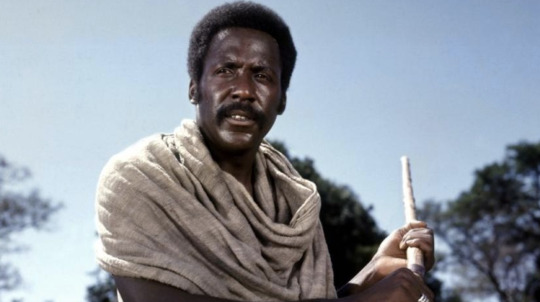
But the further they got from their mean streets, the less they reflected their day-to-day reality. Reflecting on the power of Shaft in his review of its sequel, the New York Times’ Roger Greenspun noted, “After every sort of big-town white detective from Marlowe to Madigan had obviously lost the freedom of the city, John Shaft—cool, insolent, clever—seemed a fair choice to take their place. For the detective is nothing if not indigenous; the best hero we have to offer, once we know the misery around us and our own despair.” However, “the new Shaft follows a new and glossier and tidier image, an image that is much more James Bond than Bogart.”
The Shaft sequels pivoted from the urban gangster bad guys of the first film to smugly erudite super-villains; Big Score’s plays a clarinet, for God’s sake. By the time he hits Africa, Shaft has to explicitly insist that he’s not James Bond, but it’s an easy conclusion to jump to—the line comes during a gadget briefing sequence, from his own junior varsity Q.
Yet the inclination towards such a character, for filmmakers and audiences, is understandable. In his book More Than Night, James Naremore attributes Parks and Van Peebles’ “black supermen” as a response to “decades of emasculated or nearly invisible black people on the screen,” but there was more at play here than that. By the early 1970s, black heroes were at a premium; Martin was dead and so was Malcolm, Fred Hampton and George Jackson, too, and the black revolutionary movement was scarcely in better shape than in its portrayals in films like Shaft. Eldridge Cleaver and Huey P. Newton’s in-fighting split the Panthers in 1971, and by early ’72, Newton was shutting down chapters—the ones that hadn’t been raided by police. Cleaver was in Algerian exile, and Bobby Seale was in jail. The Panthers had been undone by COINTELPRO, heroin, and ego. “We had the revolution,” Richard Pryor joked in 1976. “Remember the revolution, brother? We lost!”

But on screen, they could win. If he was enough of an outsider—his own boss, beholden to no one—the black man could be a hero. He could mouth off to cops, he could protect the community, he could be irresistible to women. He could come out on top, and truth and justice could prevail; he could do all of the things that white private detectives did back in the 1940s, and didn’t do anymore. When those white counterparts first appeared in the ‘40s, they served a similar function for an audience coming out of a Great Depression, fighting a world war, and uncertain about their future. That audience needed tough, straightforward heroes with an unerring moral compass; so did this one.
The black private eyes didn’t have the luxury, in this tense and uncertain time, of flirting with the existentialism of Hickey and Boggs or The Long Goodbye’s Marlowe or Night Moves’ Harry Moseby. Isaac Hayes may have called Shaft “a complicated man,” but there was nothing complicated about him, or any of his brethren. What you saw was what you got. “He was everything we’d always wanted to be,” said Samuel L. Jackson, who would take over the role of Shaft in a 2000 remake. “He was cool, he talked tough, he looked great, and he was fearless. He was a hero.”
In the ‘70s, black audiences looked at their movie detectives and saw what they wanted to be. White audiences looked at theirs, and saw what they were.
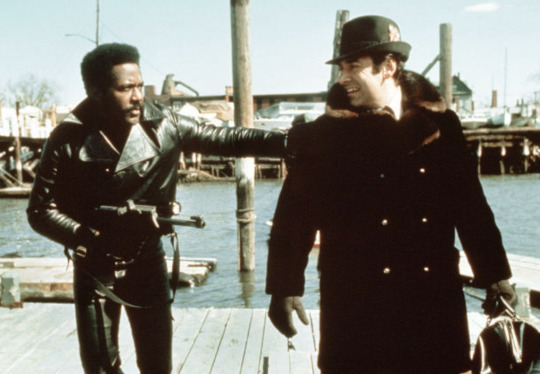
#shaft#blacksploitation#john shaft#the long goodbye#mario van peebles#Sweet Sweetback’s Baadasssss Song#The Dirty Dozen#black panther#The French Connection#Night Moves#richard pryor#Sidney Poitier#Cotton Comes to Harlem#oscilloscope#oscilloscope laboratories#oscope labs#beastie boys#adam yauch#film writing#film essay#musings
4 notes
·
View notes
Audio
(Micheaux Mission)
1 note
·
View note